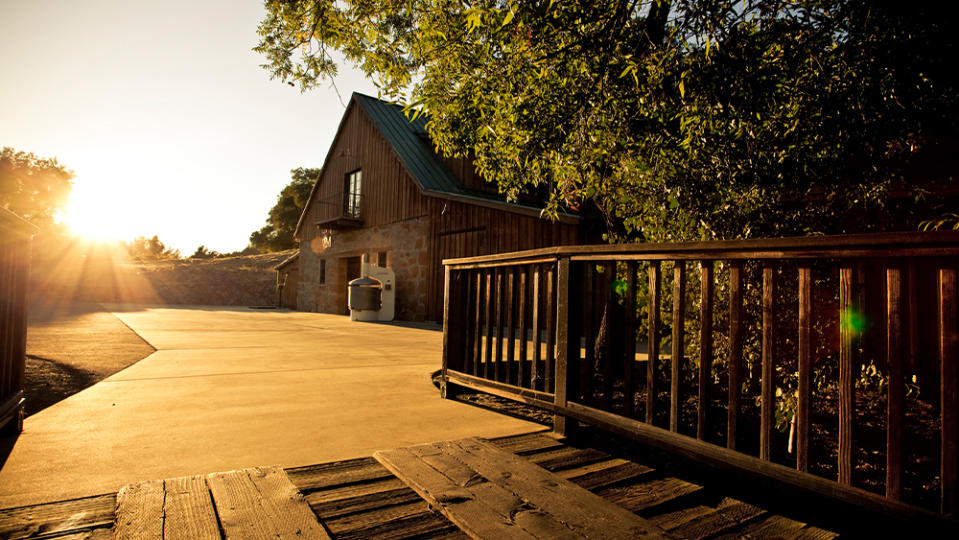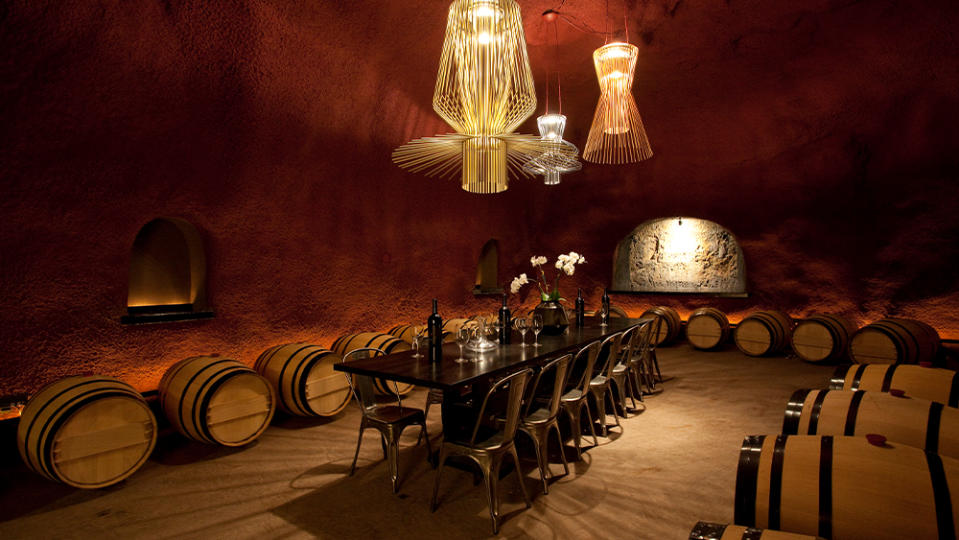The Winery Inside a Winery Making Stellar Cabernet Sauvignon

This story is from an installment of The Oeno Files, our weekly insider newsletter to the world of fine wine. Sign up here.
In Napa’s neighbor to the south, Silicon Valley has long embraced the romance of start-ups coming to life inside garages. Of course, even one of the most famous examples, Apple, is a bit of myth, since the actual work of building the company never really happened where the cars belonged, cofounder Steve Wozniak eventually conceded. However, for Napa Valley winemaker Merus (Latin for “pure and undiluted), the humble origins aren’t a tall tale. Founders Mark Herold and Erika Gottl started making wine in the garage behind their house in downtown Napa, dropping a 1998 Cabernet Sauvignon as their first release. They garnered a following, becoming rising stars in the region. So much so that Bill Foley purchased the Merus brand in 2007 and folded it into his collection. Now this “winery within a winery” produces around 10,000 bottles a year of the some of the finest yet under-the-radar Cabernet Sauvignon coming out of Napa Valley.
More from Robb Report
One of Foley’s first orders of business was finding a Napa Valley winemaking site worthy of Merus’s quality. His search for the brand’s new home led him to Rossini Ranch at the base of Howell Mountain. Founded in 1891 by Swiss-Italian immigrant Carlo Rossini, the 62-acre spread dates to a period between 1881 and 1910 that saw large numbers of settlers leaving Italy and the Italian-speaking region of Switzerland for greener pastures—and, in many cases, vineyards—of Napa and Sonoma Valleys. The four original structures on the property—in an area officially designated as Belle Canyon—were a brick oven, winery, barn, and petrified wooden bridge.

The family walked away from wine production when Prohibition wiped out their livelihood, and for 78 years, the abandoned compound became known as the Rossini Ranch Ghost Winery. The Venge family bought the property in 1998 and launched a three-year renovation project that included digging 7,000 square feet of underground caves that today are used as barrel-aging rooms and for wine tastings. In an interesting twist, the second refurbishment project under Bill Foley was spearheaded by Gottl and her Amsterdam-based design firm. And that old barn that used to house horses and then dairy cows more than a century ago is now home to Merus’s luxurious modern lounge, where a two-hour, six-vintage tasting is available by appointment only.
Not long after Foley bought the brand, Herold stopped making the wine he created in his garage. For a time, Paul Hobbs was brought on as consulting winemaker. And in 2022, the reigns were handed over to Michael Beaulac, who has 30 years of experience under his belt. Beaulac, the director of winemaking at Foley-Johnson Winery in Rutherford, blended both the 2021 and 2022 vintages, and for 2022 he shook up the sourcing, changing Merus from a single-vineyard Coombsville AVA wine to a Napa Valley blend from Coombsville, Howell Mountain, Mount Veeder, Stags Leap District, and Atlas Peak’s Stagecoach Vineyard. When selecting fruit, Beaulac wants big structure and weight but not a lot of tannin and he looks for color in the berries. “One of the most important things in making wine and finding vineyards is seeking out the right blocks that can provide structure and provide color to match,” he tells Robb Report.
Once fruit is picked, Beaulac works with smaller blocks and parcels, fermenting and aging each lot individually, which allows him to grade them to craft the most complex wines. After first fruit selection in the vineyard, grapes are also optically sorted at the winery, eliminating any undesirable berries.Then, while most of the wine is fermented in stainless steel, a portion of is puncheon fermented in 500-liter barrels before aging for 24 months in 100 percent new French oak.

Although the just-released Merus 2019 Cabernet Sauvignon was made by his predecessor, Beaulac has high praise for it. “It was a big, bold year for wines,” he says. “Quality and tonnage were up, with no real heat spikes. The wine is thus showing a great level of finesse and complexity, with acid being slightly lower than we usually see.” He says 2018 and 2019 were two great vintages in a row, and for those who like to hang on to their wine for optimal aging, he states, “Merus has always been a big wine with the idea to age, so 10 years is a conservative estimate.” (We think 15 to 20 years is more like it!) He is also a fan of the 2013, which he believes is drinking beautifully right now, pointing out, “The tannins are still present but rounded out and a fair amount of fruit is showing, though the complexity is clearly there.”
Merus 2019 Cabernet Sauvignon Napa Valley is made with the addition of 3 percent Petit Verdot. It has aromas of brambly dark fruits of the wood heightened by notes of crème brûlée, juniper berry, and pencil lead. Luxurious tannins provide a sumptuous backdrop for black currant, purple plum, dark chocolate, and lavender flavors that coalesce in a smooth, satisfying finish. Merus 2013 Cabernet Sauvignon Napa Valley (which includes 6 percent Petit Verdot) has a nose of elderberry, blackberry, and candied violet with a hint of charcuterie. It feels good in the mouth, offering plush tannins, well-integrated acidity and a gorgeous medley of fruit and spice flavors with a closing note of tobacco leaf and an enduring length on the palate.
Want more exclusive wine stories delivered to your inbox every Wednesday? Subscribe to our wine newsletter The Oeno Files today!
Best of Robb Report
Why a Heritage Turkey Is the Best Thanksgiving Bird—and How to Get One
The 10 Best Wines to Pair With Steak, From Cabernet to Malbec
Sign up for Robb Report's Newsletter. For the latest news, follow us on Facebook, Twitter, and Instagram.

 Yahoo Sport
Yahoo Sport 






































